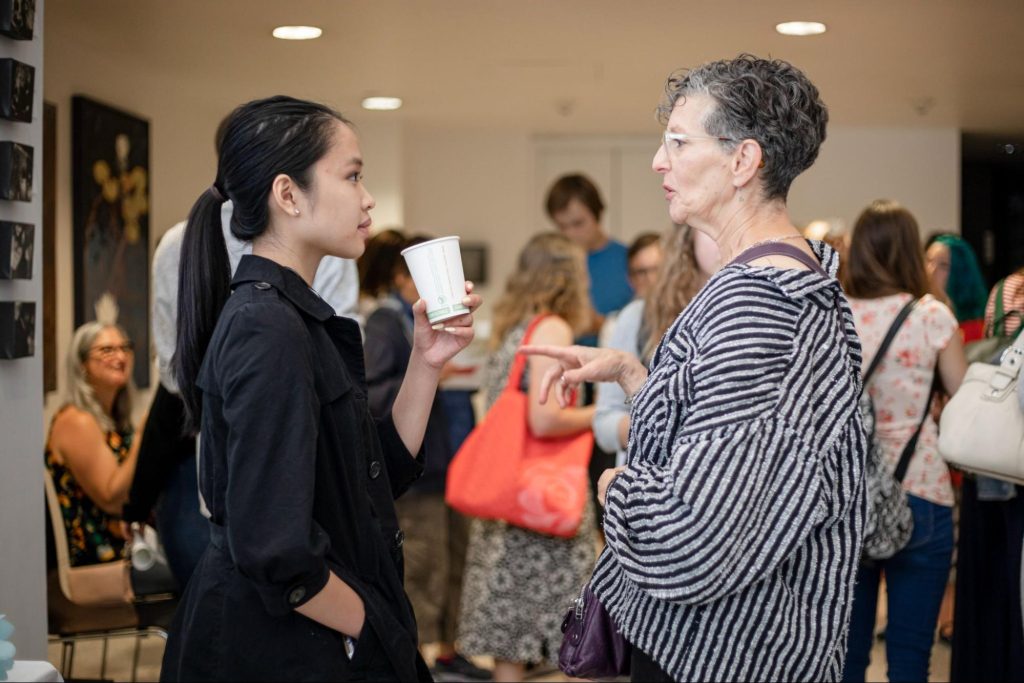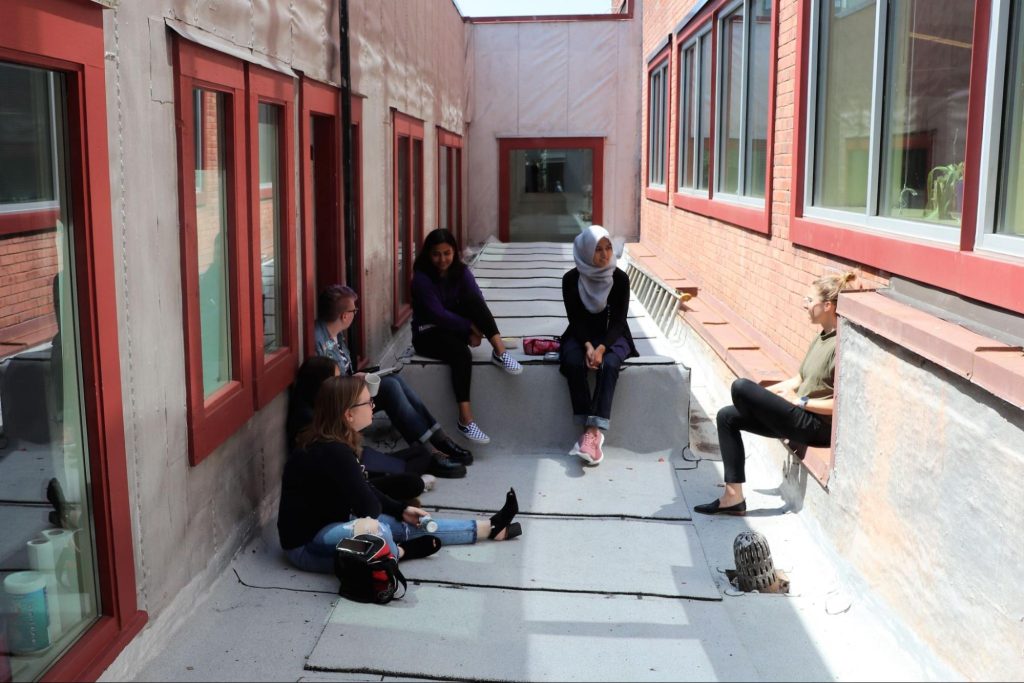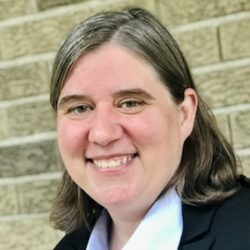Why youth media is worth the investment

Kelsey Tolchin-Kupferer
This piece was originally published as part of a series for the Reynolds Journalism Institute to introduce the youth media starter guide, a toolkit for public radio newsrooms ready to invest in youth media programs. It is republished here with permission.
Maybe you read our piece on why youth media matters and found yourself nodding vigorously in agreement. Perhaps your experience in a youth media program was the catalyst for your career in journalism, and you want to start your own youth media program.
You have the passion, but how can you make the argument to newsroom leadership that youth media is worth the investment?
This piece outlines how youth media programs can benefit a radio station or newsroom. It focuses on KUOW Public Radio in Seattle and RadioActive Youth Media, KUOW’s radio journalism and audio storytelling program for teens and young adults that’s been going strong for nearly 20 years. We have been around RadioActive for about six of those years (and working in youth radio for a combined 15 years) and wanted to pull from our experiences and knowledge. Throughout the years, we have been surprised by some of these benefits, and we haven’t seen them articulated in one place.
Our hope is that this piece helps you strengthen the case for how youth media can benefit your station and its newsroom, with the help of examples.
Below we cover four ways a youth media program can benefit a newsroom:
- Create a talent pipeline
- Train reporters and producers as editors
- Help meet source and story diversity goals
- Introduce your station to new funding opportunities
Create a talent pipeline
NPR canceled its 2023 internship program due to budget cuts. NPR states on its internship page that the program helped NPR discover nearly 17% of its staff as of June 2020. Past NPR interns include Ari Shapiro, Audie Cornish and Guy Raz. (Impacted by the cancellation of these programs? Consider Report4America and NPR’s Next Generation Radio, a 5-day, audio-focused, digital journalism project.]
NPR also canceled its prestigious Kroc Fellowship program. Past Kroc fellows include Ailsa Chang, Sam Sanders, Hansi Lo Wang, Habiba Nosheen and Brian Reed. Former Kroc fellows and NPR staff tweeted reactions about the news of the fellowship’s cancellation.
The cancellation of these NPR programs affects not only NPR but also NPR member stations. Your station may have a past NPR intern in your newsroom, and that internship may be what landed them a job at your shop.
Stations cannot rely solely on external internship programs like NPR’s for their talent pool. Station leadership should consider training and investing in talent in their own communities.
Examples of this in action
In the past, RadioActive has partnered with KUOW’s newsroom and community engagement departments to create internships. A RadioActive graduate was KUOW’s first newsroom fellow. Youth worked alongside reporters and producers through RadioActive’s youth co-reporting project, which has led to the production of eight stories/show episodes with a ninth in production.
At the time of writing this, there are four full-time employees at KUOW who are graduates of RadioActive or its predecessor, Weekday High. They work as reporters, producers and announcers, and you can find them in the community engagement department and newsroom. In addition to these full-time employees, KUOW and RadioActive currently employ 19 graduates on a part-time or hourly basis.
Challenges
Time for some real talk, though: Your station needs to be aware of challenges of employing people who went through youth media programs.
If a journalist started at an organization as part of a youth media program, there is a danger that they will always be seen as a “youth” or “intern.” That perception can affect how much they are paid and their ability to advance in a station.
This is especially concerning considering that youth media programs often aim to diversify newsrooms and prioritize youth of color and folks from underrepresented communities.
Great, your newsroom now has a young BIPOC journalist, for example, but now they’re paid less than everyone else and are unable to advance in their careers in your newsroom. (To read more about these disparities in newsrooms, check out these pieces from AAJA, Poynter, NewsGuild and NPR.)
Doris Truong says it best in her Nieman Lab prediction for journalism in 2023: “To grow talent, news organizations need to invest in creating fertile ground for emerging journalists to do their best — and to make occasional mistakes. But those mistakes should not include entering the workforce underpaid and with a mountain of student loans.”
Ideas
- Pay people in your training programs, from youth media participants to newsroom interns and fellows.
- Establish structures for employees to advance in their careers with clear pay ranges and expectations.
- If you are a supervisor to someone who participated in a training program, check in with them regularly about their experiences at your organization and their professional development goals.
Further reading
- Mind the gap: Uncovering pay disparity in the newsroom (AAJA)
- Study by six Gannett unions finds racial and gender pay inequities (Poynter)
- Study shows pay disparities for women and journalists of color as high as $27,000 at Gannett (NewsGuild.org)
- People of color at New York Times get lower ratings in job reviews, union says (NPR)
- Community Q&A: As a white manager, how do I build trust and be a good ally to my colleagues of color? (OpenNews)
- Inverting the talent pipeline (NiemanLab)
- As a white manager, how do I build trust and be a good ally to my colleagues of color? (RJI)
- Current’s first-ever pubmedia salary survey finds age and gender gaps, higher union wages (Current)
Train reporters and producers as editors
RadioActive works with KUOW’s news director and newsroom to determine who is interested, willing and available to edit youth-produced features for broadcast and episodes of the RadioActive podcast.
We have worked with newsroom editors in the past, but that is not always an option due to staffing and scheduling.
The challenge of not having enough editors available makes for a unique opportunity: to train reporters and producers as editors, in a “lower stakes, slower paced” learning environment.
This is beneficial for many reasons. Your station can ensure youth-produced pieces meet editorial standards by having an editor from the newsroom. Reporters and producers can grow their editing skills, which benefits people looking for professional development as well as newsrooms that can now invest in training future editors.
In fact, Mary started editing youth-produced features for broadcast on KUOW as well as episodes of the RadioActive podcast. Now she works as a freelance podcast editor, and she’s not sure what her path to becoming an editor would’ve looked like without her time at RadioActive.
“Editors are high in demand, but there aren’t enough ways for people who want to become editors to get the skills they need to break into the industry,” says Neon Hum Media. Neon Hum Media started its Podcast Editors’ Bootcamp to try to address this issue.
Editors have a lot of power in newsrooms, from deciding which stories deserve coverage to how the story should be told. This inherently underscores the importance of having editors from different backgrounds and experiences.
“The narrative audio industry has a deep need for more Black and brown story editors, and editors from a broader range of perspectives and life experiences. But there’s often no obvious way for people who want to be editors to get there,” AIR Media states. AIR has its own program to train editors called Edit Mode.
Ideas
- Ask your newsroom who wants to gain editing skills. Have your news director or an editor lead a training. Have your trainees edit youth-produced stories for broadcast or web. It can be advantageous to have your newsroom leaders reflect on their craft and communicate best practices (e.g., what they look for in a story, what are the standards and expectations a story needs to meet in order to broadcast, what types of stories work best for different shows).
- Support your staff in their professional development, including funding courses on editing or programs on newsroom leadership and allowing employees to learn during work hours.
- If a story centers on a specific community and your editors just don’t have the range, consider hiring an editor from outside of your organization who is part of that community to work as a consultant, like a sensitivity reader or expert reader. Reporting that harms communities isn’t “diverse.” It’s harmful.
- RadioActive employs “Story Consultants” for stories that center people and communities that have been and are ignored, harmed or misrepresented by legacy media, such as youth involved in the foster care system and sex workers. These consultants are typically people who are both part of the community being covered and who cover that community themselves in their own journalism work. Consultants are brought on to work with the youth and the newsroom editor at the beginning, middle and end of the storytelling process.

Diversify sources and stories
Youth media reporting can help your newsroom meet goals related to source and story diversity.
At RadioActive, we encourage youth to explore stories that they are in a unique position to report on. This has led to stories that include languages other than English and center a range of experiences, from neurodiverse teens to neighborhoods often underrepresented in the newsroom’s coverage to people under the age of 25.
Lila Shroff is a student at Stanford University and graduate of RadioActive Youth Media. She reflected on diversity and building trust as a teen journalist for RadioActive in this piece for Poynter.
“Time and time again,” Shroff writes, “I’ve talked with RadioActive students who find themselves concerned by the same issue: They want to share a personal story, but the interviewees don’t speak English. Unlike print, where translation is easy, things are more complicated with audio.”
“Instead of worrying that English listeners won’t be able to understand, RadioActive reminds students that other communities will,” Shroff continues. “The fear of shutting out one community is also an opportunity to speak to a new one — one that is often left out of public media.”
Examples of multilingualism:
- The secret diaries my grandma snuck out of a Communist prison in Vietnam (KUOW)
- Breaking the culture of silence: My eating disorder and my Mexican mother (KUOW)
- RadioActive graduates have gone on to bring their multilingualism into other newsrooms
Your newsroom’s coverage of a specific topic could benefit from reporting that comes from a different vantage point.
Shroff shares two examples: “This RadioActive story on navigating the school system as a neurodiverse teen would have been substantially less impactful had it been told by a neurotypical journalist. A teen’s RadioActive piece on depression memes provides an element of insight into youth mental health that would have been lost had an adult reported the story.”
Building trust
RadioActive Youth Media Program Manager Lila Kitaeff Lakehart shares another potential benefit of youth media programs: “the opportunity to build trust and reach in diverse communities.”
Lakehart shares an example. “If someone in the Somali community hears a story by a young Somali person (who maybe they know or maybe they don’t), they might be more likely to talk to KUOW for a story in the future.”
Example
“It’s kept me alive”: Kent residents rely on free farmers market in Walnut Park (KUOW) by Marian Mohamed
RadioActive youth producer Marian Mohamed was excited to report a story on her home turf. KUOW coverage usually centers around Seattle and not South Seattle or its suburbs. Mohamed, however, reports on Kent from within the community.
It can be intimidating to be approached by someone with a microphone who’s asking you questions. The experience can be different depending on who is holding the microphone. Consider the impact for someone to see someone who looks like you or speaks your language behind the microphone, or someone you have seen around the neighborhood before.
Further reading
- Interested in more about building trust in communities? Check out Nissa Rhee’s RJI fellowship project, starting here: A Chicago news outlet rethinks “hard-to-reach” audiences (RJI)
- RJI Fellow Tasmiha Khan is creating a toolkit on how to best address Muslims and Islam in the media (RJI)
- A toolkit for newsrooms to better serve the disability community (RJI)
Funding opportunities
As a youth program, KUOW’s RadioActive Youth Media is eligible to apply for funding from avenues that KUOW would not be eligible for on its own.
“With grantors, youth media opens up a whole new set of funding opportunities for public media stations,” says Matt Alberson, a philanthropy officer at KUOW Public Radio who leads the major gifts team. Many youth media programs are eligible to apply not just to grants focused on media, journalism and documentary, but also youth development, education, STEM and technology, job training, career exploration, innovation, arts and more.

Interested in bringing youth media to your news organization? Learn more in the youth media starter guide, a user-friendly toolkit that includes sections on securing support, partnerships, youth development practices, program ideas, and more.
Mary Heisey and Kelsey Tolchin-Kupferer created the youth media starter guide as Reynolds Journalism Institute Innovation Fellows. Heisey works as an audio producer and narrative editor based in Charlotte, N.C. She has worked on youth media programs at NPR member stations since 2014. Tolchin-Kupferer is an educator, journalist and audio producer. She works with teens to produce radio stories and podcasts for KUOW’s RadioActive Youth Media in Seattle.






